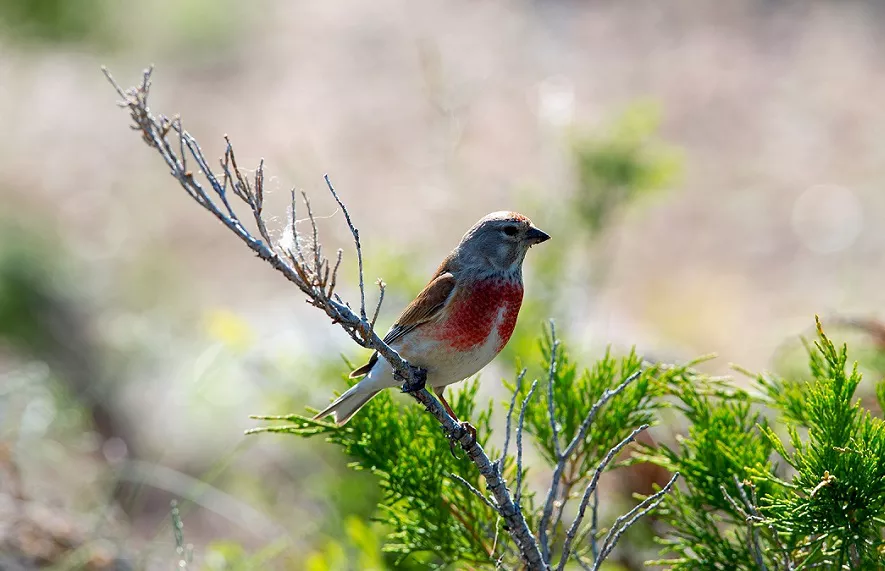The Common Linnet (Linaria cannabina) is a delightful songbird that belongs to the finch family (Fringillidae). With its distinctive appearance, melodious song, and widespread distribution across Europe, the Common Linnet has captured the hearts of birdwatchers and nature enthusiasts. In this article, we will explore the key characteristics, habitat, behavior, and conservation status of the Common Linnet, shedding light on its significance in the avian world.
Physical Characteristics:
The Common Linnet boasts unique features that make it easily recognizable:
Plumage: Adult males during the breeding season exhibit a vibrant pinkish-red coloration on their breast and face, while the rest of their body displays a mix of brown, gray, and white feathers. Outside of the breeding season, males resemble females, with a predominantly brown coloration.
Size: This small songbird measures around 13-14 centimeters (5-5.5 inches) in length, with a wingspan of approximately 20-25 centimeters (8-10 inches).
Distribution and Habitat:
The Common Linnet is widely distributed across Europe, including countries such as the United Kingdom, Ireland, France, Germany, Spain, and Scandinavia. It inhabits a variety of habitats, including open grasslands, heathlands, moorlands, farmlands, and scrublands. It is commonly found in areas with abundant seed-bearing plants.
Behavior and Song:
Feeding Habits: Common Linnets primarily feed on seeds, particularly those of grasses, weeds, and various plants. They have specialized bills that allow them to extract seeds from the seed heads.
Melodious Song: During the breeding season, male Common Linnets sing a delightful song to establish territory and attract mates. Their songs are characterized by a mix of trills, chirps, and warbles, showcasing their vocal abilities.
Breeding and Conservation:
Breeding Behavior: Common Linnets are monogamous and form pair bonds during the breeding season, which typically occurs between April and August. They build cup-shaped nests made of twigs, grass, and moss, often hidden in dense vegetation. The female lays a clutch of 4-6 eggs, which are incubated by both parents for about 12-13 days.
Conservation Status: The Common Linnet is currently listed as a species of “Least Concern” on the IUCN Red List. However, habitat loss, agricultural intensification, and changes in land use practices pose potential threats to their populations. Conservation efforts focus on preserving suitable habitats, promoting sustainable farming methods, and ensuring the availability of food sources for these songbirds.
Ecological Significance:
Seed Dispersal: Common Linnets play a vital role in seed dispersal as they feed on a variety of plants and weed seeds. By consuming and transporting seeds to different locations, they contribute to the regeneration and distribution of plant species within their habitats.
Indicator Species: The presence or absence of Common Linnets can serve as an indicator of the overall health and diversity of the surrounding ecosystem. Their presence indicates the availability of suitable habitats and the presence of diverse vegetation.
Conclusion:
The Common Linnet, with its charming appearance, melodic song, and ecological role as a seed disperser, holds a special place in Europe’s avian community. By understanding its unique characteristics, habitat requirements, and conservation needs, we can appreciate the importance of preserving the natural habitats and biodiversity that support these delightful songbirds. Through conservation efforts and responsible land management practices, we can ensure the continued presence of Common Linnets and maintain the harmony of our shared natural heritage.


 Facebook
Facebook  Instagram
Instagram  Youtube
Youtube 